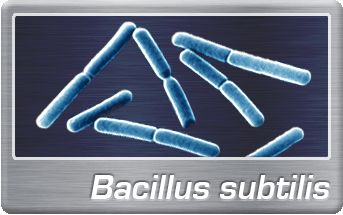Team:Cambridge
From 2008.igem.org
(Difference between revisions)
| Line 25: | Line 25: | ||
</td> | </td> | ||
</tr> | </tr> | ||
| - | |||
<tr> | <tr> | ||
<td colspan=3> | <td colspan=3> | ||
| Line 31: | Line 30: | ||
<div class="contentf"> | <div class="contentf"> | ||
<div style="height: 400; padding: 5px; background:#fff; line-height:170%"> | <div style="height: 400; padding: 5px; background:#fff; line-height:170%"> | ||
| - | < | + | <h1>Voltage<h1> |
| - | < | + | |
</div> | </div> | ||
| - | <table border="0" cellspacing="3" align="center"> | + | </div> |
| + | <b class="b4f"></b><b class="b3f"></b><b class="b2f"></b><b class="b1f"></b> | ||
| + | </td> | ||
| + | </tr> | ||
| + | <tr> | ||
| + | <td colspan=3> | ||
| + | <b class="b1f"></b><b class="b2f"></b><b class="b3f"></b><b class="b4f"></b> | ||
| + | <div class="contentf"> | ||
| + | <div style="height: 400; padding: 5px; background:#fff; line-height:170%"> | ||
| + | <h1>Signalling</h1> | ||
| + | |||
| + | </div> | ||
| + | </div> | ||
| + | <b class="b4f"></b><b class="b3f"></b><b class="b2f"></b><b class="b1f"></b> | ||
| + | </td> | ||
| + | </tr> | ||
| + | <tr> | ||
| + | <td colspan=3> | ||
| + | <b class="b1f"></b><b class="b2f"></b><b class="b3f"></b><b class="b4f"></b> | ||
| + | <div class="contentf"> | ||
| + | <div style="height: 400; padding: 5px; background:#fff; line-height:170%"> | ||
| + | <h1>Bacillus</h1> | ||
| + | </div> | ||
| + | </div> | ||
| + | <b class="b4f"></b><b class="b3f"></b><b class="b2f"></b><b class="b1f"></b> | ||
| + | </td> | ||
| + | </tr> | ||
| + | <tr> | ||
| + | <td colspan=3> | ||
| + | <b class="b1f"></b><b class="b2f"></b><b class="b3f"></b><b class="b4f"></b> | ||
| + | <div class="contentf"> | ||
| + | <div style="height: 400; padding: 5px; background:#fff; line-height:170%"> | ||
| + | <h1>Modelling</h1> | ||
| + | </div> | ||
| + | </div> | ||
| + | <b class="b4f"></b><b class="b3f"></b><b class="b2f"></b><b class="b1f"></b> | ||
| + | </td> | ||
| + | </tr> | ||
| + | </table> | ||
| + | <table width= border="0" style="background:#444; padding:5px; width:100%;"> | ||
| + | <tr> | ||
| + | <td> | ||
| + | <b class="b1f"></b><b class="b2f"></b><b class="b3f"></b><b class="b4f"></b> | ||
| + | <div class="contentf"> | ||
| + | <div style="height: 400; padding: 5px; background:#fff; line-height:170%"> | ||
| + | <table border="0" cellspacing="3" align="center"> | ||
<tr> | <tr> | ||
<td width="200"><a href="http://www.labtech.co.uk/" class="noborder"><img src="http://www.gen.cam.ac.uk/Images/logos/iGEMsponsors/labtech.jpg" alt="labtech" width="131" height="17"></a></td> | <td width="200"><a href="http://www.labtech.co.uk/" class="noborder"><img src="http://www.gen.cam.ac.uk/Images/logos/iGEMsponsors/labtech.jpg" alt="labtech" width="131" height="17"></a></td> | ||
Revision as of 00:05, 30 October 2008
 "
"





